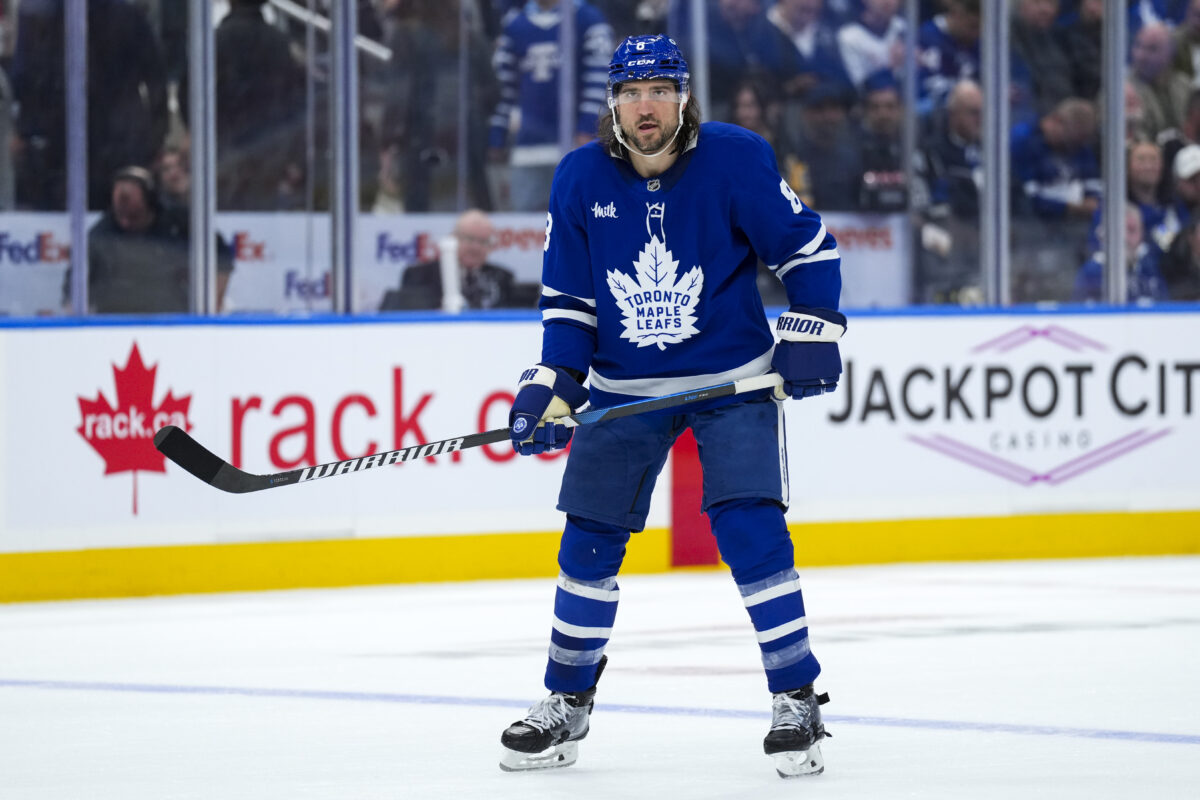How the Maple Leafs’ defense steals game in the playoffs – Hockey Writer – Toronto Maple Leaf

Thanks to the attention of the Toronto Maple Leafs’ star forwards – what they deserve – the true story of this series against the Ottawa Senators could be what happened on the other side of the ice. Led by head coach Craig Berube, the Maple Leafs accepted a blue-collar defensive identity, which quietly made them successful for them.
Related: Canadian hockey fans’ complex celebration of Ovichkin’s historical feat
This is not flashy. This is not sexy. But it’s winning the playoff hockey.
Simon Benoît
Let’s start with the unlikely overtime hero Simon Benoît in Game 2. With only the sixth defender, Benoît has become one of the most reliable full-time Blueliners in the NHL. He recorded 20 minutes in Game 2, not because of injury or despair. This is because he has won trust.
Benoît does not run power. He doesn’t like the skills of hockey. He made a mistake, too. But he atones for his sins by winning the hockey battle, clearing the creases and completing the check without penalty. More importantly, he plays hard under pressure – exactly what the playoff hockey requires.
Related: NHL Rumors: Dutch Islander, Ranger and Maple Leaf News
In overtime, it was not just his defensive consciousness. Benoît broke the risk cross-pass, quickly transitioned the puck, put it on the Max Domi, and then continued to slide online, setting up a perfect screen. His game-winning sequence is a snapshot of everything Berube likes: responsible hockey, layered support and execution under pressure.
Shooting has become a systematic Maple Leaf Statement
Maple Leaf blocked 32 photos in Game 2; Ottawa blocked six. It’s not just an effort statistic. This is a buy statistics. It shows that from stars like Mitch Marner to deep guys like Pontus Holmberg, every skater is committed to falling down, protecting the goalkeeper and sacrificing his body.

Players like Jake McCabe and Chris Tanev thrived in this structure. They can pack better, clear out the second imposition opportunity and keep quiet in front of Anthony Stolarz. McCabe in particular has become a tone stage. After the game, he kept cleaning and punishing hits, letting his opponent know that the middle of the ice is no longer their track.
Related: Maple Leaf’s Early Playoff Success More Than the Core
The top four soldiers in Toronto are recording a lot of time, but they have done it cleverly. They are doing short shifts, making effective cleanup attempts, and getting support from strikers who actually did a back-check.
It’s not just defense-its structure. Start with the coach.
Maple Leaf’s defense shows maturity in panic
One of the biggest knocks from the previous Maple Leafs was how they collapsed under pressure. Mistakes, desperately clearing, missed jobs in slots. Fans no longer see this, at least rarely see it often.
Berube’s system emphasizes calm under pressure. Toronto doesn’t overreact when Ottawa presses. They collapse inward, cutting off high-risk lanes and waiting for a while. Even if an error occurs, they will – the team will not collapse. The team is clearly learning this maturity and discipline.

After giving up too many A-level opportunities in Game 1, Maple Leaf tightened sharply in Game 2. They limited the chances of sprinting in the second cycle, boxed better, and entered the pass lane. This is an example of a textbook for mid-term adjustments and thanks to the coaching staff and players for their quick execution.
Is this defensive game sustainable?
This is a big question: Can Maple Leafs maintain this game? While the footage of over 30 blocking shots in the game is excellent, it doesn’t seem sustainable to be able to play every game in four playoff series. Of course, this is thinking. However, logic suggests that physical losses will eventually add up. But what about identity? structure? That is sustainable. It travels very well.
Related: Berube’s coaching clinic helps Maple Leaf close senator
Berube’s team does not rely on Home-Ice duels or popular winning streaks. They rely on repeatable habits, which include defensive details. It was with the St. Louis Blues winning the Stanley Cup under his dominance: layered defense, promises from all five skaters and the way to score enough to win the tension.
Currently, Toronto looks like it was built to win 2-1 and 3-2 games. This is especially true for the defender who punches holes above the weight class like Benoît.
Is this a new era of maple leaf hockey?
Perhaps the most convincing part of this evolution is how it feels. Toronto has been a high-activity team for years, relying on strength to play and snap-up opportunities. Now, they are willing to win low-activity matches – slow down, grind and thwart opponents.
And if the series continues the way the trend is, the stars who have earned all the credit will not. This will be the shooter, the crease-clearer and the unguarded man-in other words, blue line, blue collar maple leaf.

Source link



